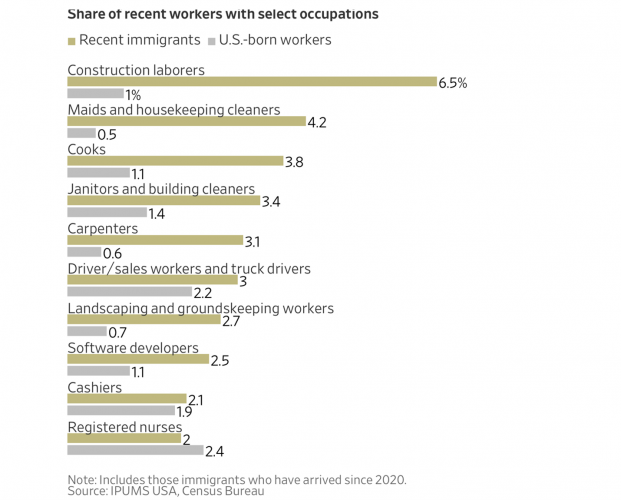Immigration Is Remaking The U.S. Workforce
Randy Wolken, President & CEO
A recent Wall Street Journal (WSJ) article analyzed how an unprecedented surge of illegal migrants has remade the composition of the United States’ labor force.
“Immigrants are swelling the population and changing the makeup of the U.S. labor force in ways that are likely to reverberate through the economy for decades,” wrote WSJ economics reporter Paul Kiernan. Kiernan noted that since the end of 2020, more than nine million people have migrated to the U.S., nearly as many as the number that came in the previous decade. As important, these migrants are younger and more likely to be of working age than U.S.-born Americans.
Also, of foreigners who have arrived since 2020, 78% are between the ages of 16 and 64, compared with 60% of those born in the U.S., according to the monthly census data. Of these recent immigrants age 16 or older, 68%—the participation rate—are either working or looking for a job. In raw numbers, that likely amounts to more than five million people, equal to roughly 3% of the labor force.
Although the newcomers are settling around the country, for the 4.2 million people assigned hearings in immigration court since late 2020, the top five destination states are Florida, Texas, California, New York, and New Jersey.
However, while most recent immigrants can work, many aren’t ready for high-skilled jobs. The census data show that immigrants who have arrived since the start of 2020 are more than twice as likely to lack a high school diploma as U.S.-born workers.
Immigrants who have arrived since the start of 2020 face higher jobless rates than the broader population. Unemployment for recent immigrants averaged 8.2% between May and July, versus 4.2% for American-born workers and 3.5% for earlier immigrant cohorts. Overall unemployment has increased this year to 4.3% in July, partly due to the swelling numbers of immigrants looking for jobs.
Recent immigrants tend to earn less than U.S.-born workers because of their lower level of education, lack of English, and, in some cases, because they are working without permission. They might also compete with existing workers with less education and put downward pressure on their wages, too.
